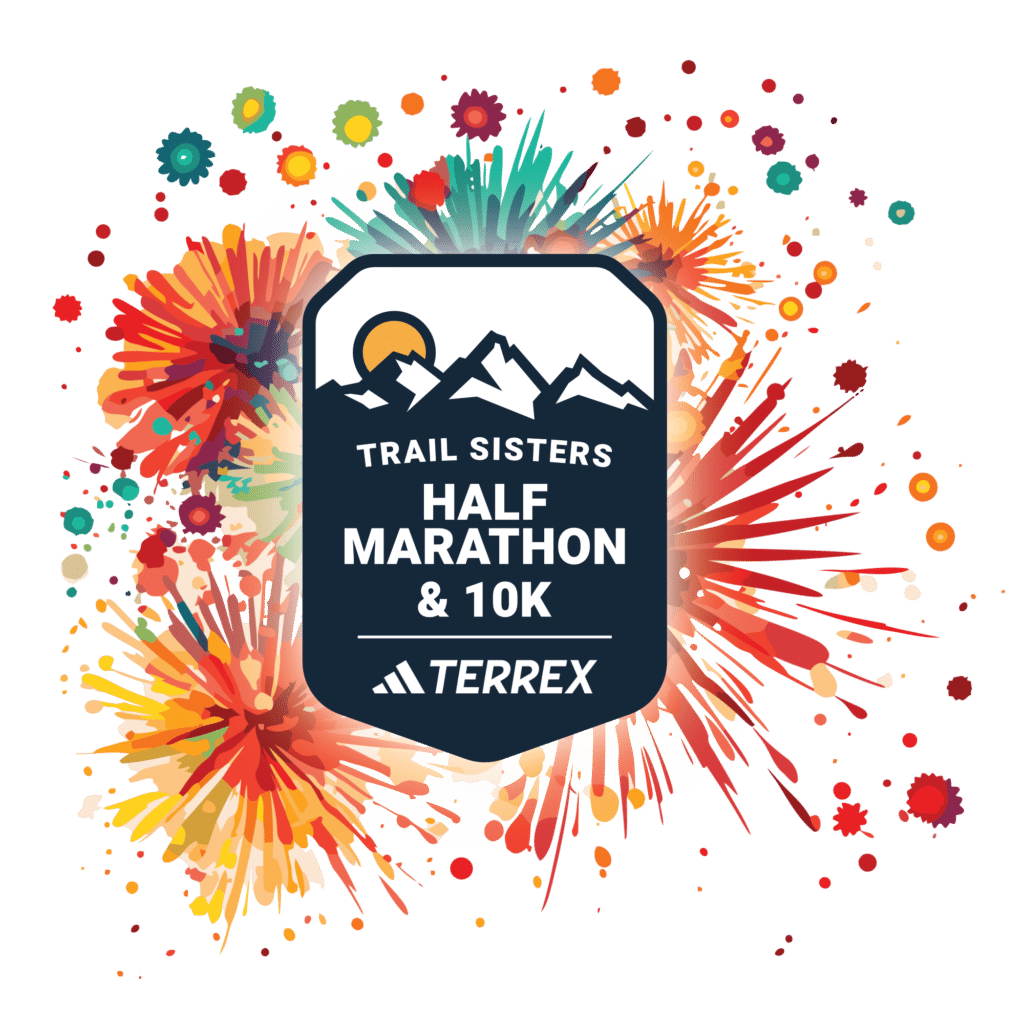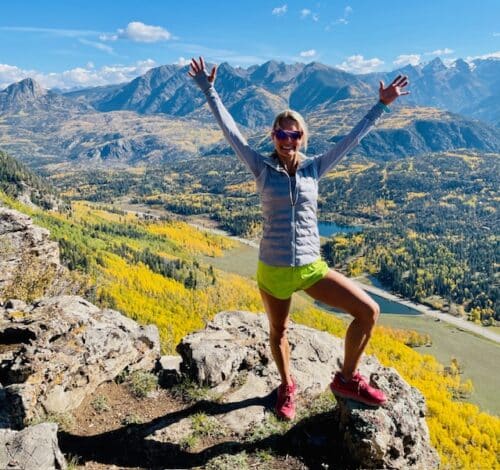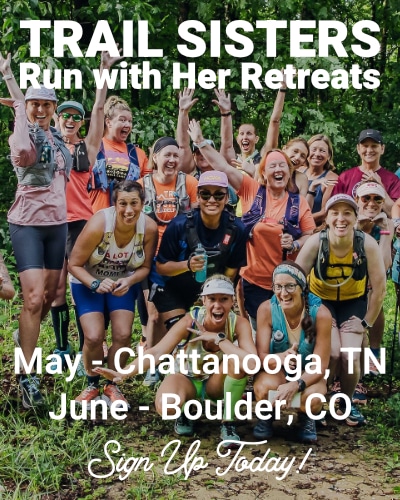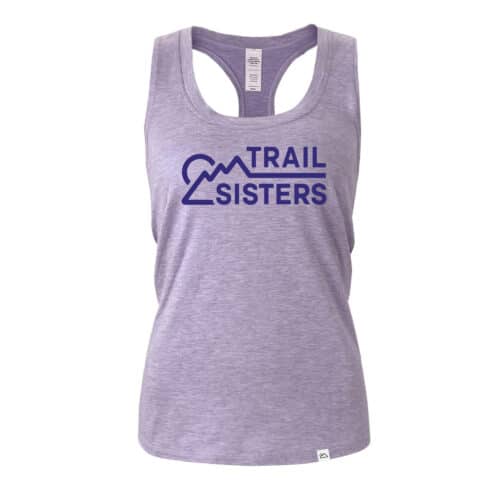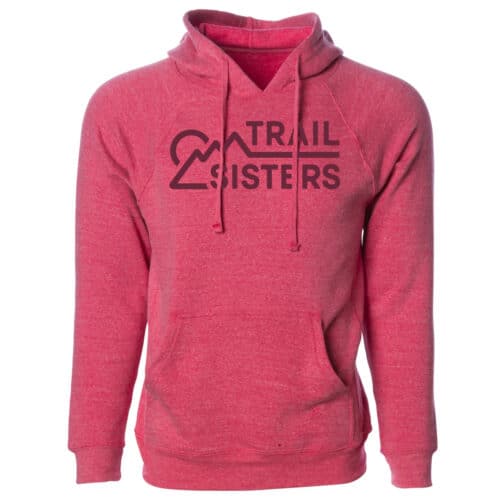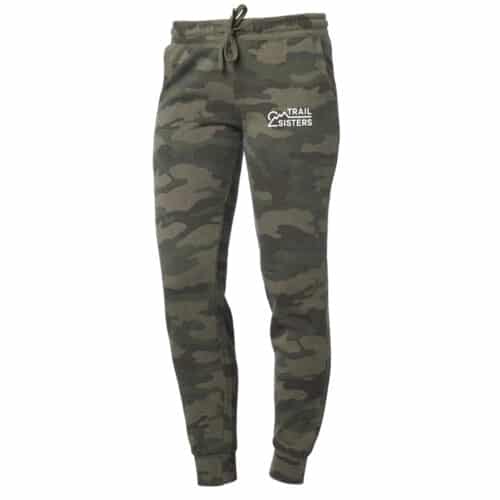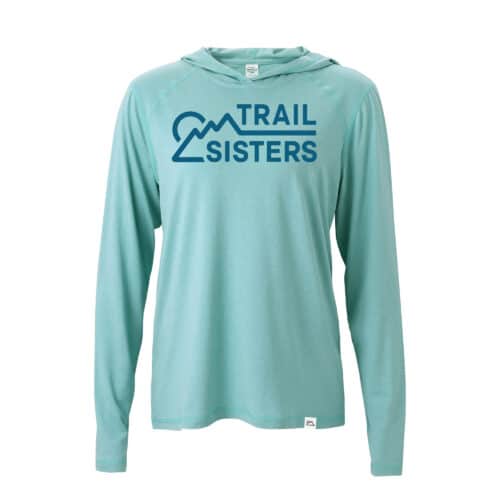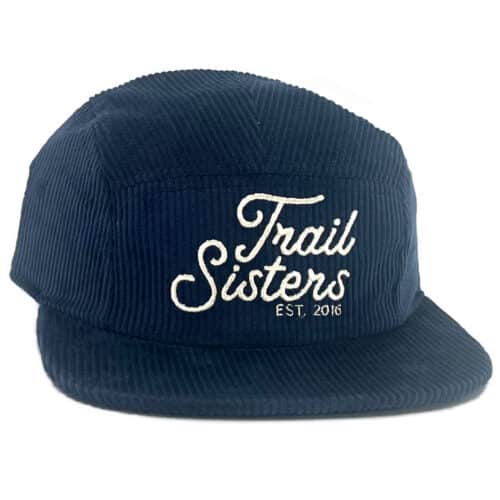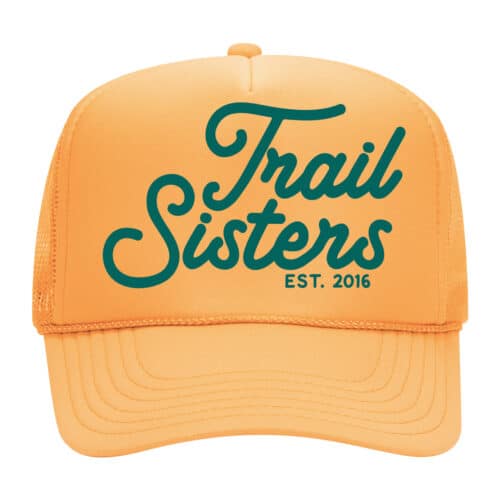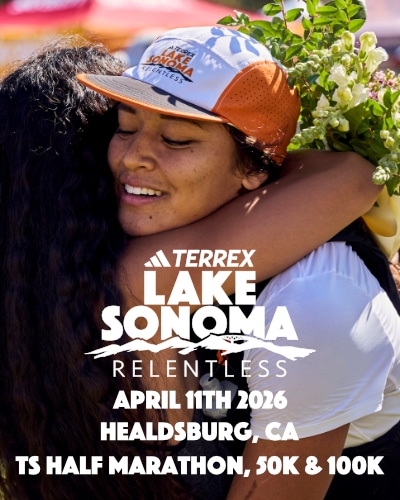Main Menu
My Community Carried Me Through the Black Canyon Ultra

Mara Noel White is a world traveler, trail runner, and lover of bicycles. She has completed several multi-day treks across the globe, adopting the trail name The Tiny Adventurer. She is also a poet and writer, and you may find her performing poetry at open mics anywhere in the world! Mara is a licensed social worker and has spent much of her career advocating for issues related to social equity and environmental justice, including creating more inclusive spaces for women, LGBTQ+, and BIPOC in the outdoors. Some of her favorite activities are trail running, cycling, backpacking, camping, diving, kayaking, climbing. Her most cherished moments are with friends she’s made across the world, and she’s dedicated to helping others make the most of their adventures through one simple concept: kindness.
Share This Article!
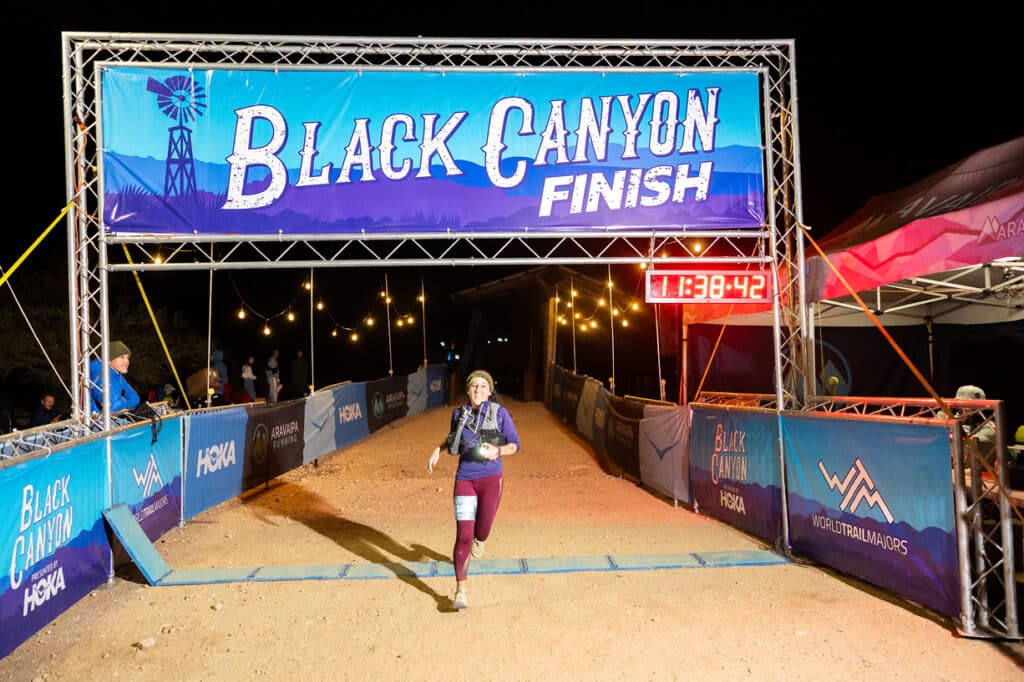

By: Mara White
“Okay, I have 9 miles to Cottonwood Gulch – it’s the longest stretch between aid, and I’m over halfway in. Once I get there, I will have less than 5 miles until I get to him. He’ll be happy to see me and he’ll help me ice my knee.”
I talked to myself this way throughout the second half of the race. I had been looking forward to this race since I signed up four months ago. Anyone who follows trail running knows that the Black Canyon Ultras are a big deal. Athletes come from all over the country (and beyond) to run this race in the hopes of scoring a Golden Ticket to the Western States 100.
I had no such aspiration. I signed up for the race on a whim. I was in Alaska where I spent 6 months cycling and training sled dogs when one of my closest friends back home in Phoenix text me to tell me she was going to sign up for the 50k. I pulled the race webpage up on my laptop, and knowing that slots would fill within 24 hours, I decided to go ahead and sign up for the 100k. I was, at that moment, recovering from a knee injury after racing the Angel Creek 50 in Fairbanks (a highly difficult ultramarathon that takes place in the rugged mountainous region of Fairbanks all the way to Chena Hot Springs, most of it off trail, with 12,600 feet of gain). “My knee will be fully healed by then and I’ll be ready to run, I’m sure,” was my exact thought as I keyed in my credit card number to pay the hefty entrance fees we runners are all too happy to shell out so that we can later ask ourselves why on earth we pay to put ourselves through so much pain.
I returned home to Phoenix in November of 2024, just three months before the big race. Though I had had the excess fluid drained from my knee and had taken 3 months off from running, something still wasn’t right. I immediately sought out a sports doctor and physical therapist. We got to work immediately with the goal of getting me back on the trail. I returned to my running group (shout out to my Aravaipa family!), and began training with my friends. While I was able to run just fine, my knee still felt funny. I considered dropping from the 100k to the 50k race, but as February drew nearer and training runs went considerably well, I felt more compelled to move forward with the 100k.
As race day drew nearer, the excitement – and the anxiety – swelled. I love racing ultramarathons, and the preparation is always exciting. But I was also nervous because my knee wasn’t fully recovered, not by a long shot. I had no real answers and I knew it could go wrong. But my friends encouraged me and I had made my decision.
Race day came. My partner, another trail runner, wanted to crew me – so he drove me to Mayer, let me nap on him for thirty minutes in the car, and then walked with me up to the start line and saw me off.
Though it was a chilly start for this desert girl, the temps quickly rose, and with them my comfort level. I felt confident in my ‘hold-back’ pace, though when I got to the aid/crew station at mile 19.2, my partner informed me that for the sake of my knee I should slow down. “I am holding back,” I retorted. I knew he was right, though. I could already feel a slightly dull ache in my right knee. I made my rounds to say a cheerful ‘hello’ and ‘thank you’ to my Aravaipa friends, and set back out onto the trail at a more modest pace.
By the time I made it to the next aid station at mile 24, the slight ache evolved into a deep ache and I knew I would need to ice my knee at the next crew station, which would be the halfway point of the race. As I ran into the Deep Canyon Ranch aid station, I spotted my partner. I was in high spirits – aside from the ache in my knee I felt strong. As runners rushed over to the water and Gatorade stations, dousing their faces and filling their bandanas and t-shirts with ice to cool their heads, I wrapped my t-shirt with ice and propped my knee up on my partner’s cooler and popped two anti-inflammatory tablets (a practice I never engage in but desperate times…). I wanted to try to slow down the inflammation, if possible (I don’t actually know if it made a difference). “I don’t know if my knee is going to let me go all the way, but I’m not giving up yet,” I remarked. My partner would later tell me he was worried about my knee, but he saw the look in my eyes and knew the best thing he could do was help me at the stations and support my goal of finishing the race.
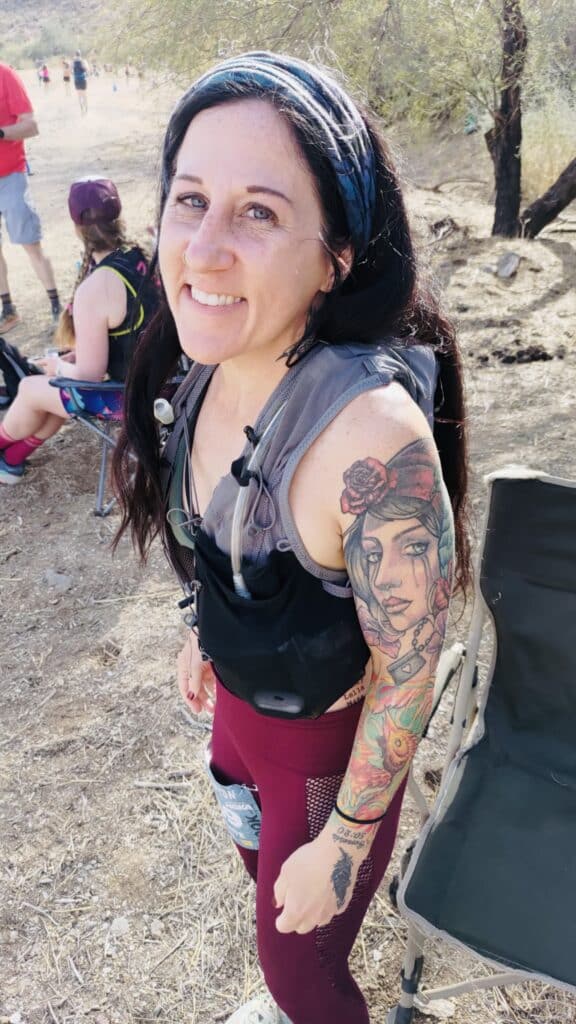
As other runners struggled to deal with the heat, my knee got weaker. My pace slowed significantly, especially during the downhills, when the mechanics of my knee felt at their most vulnerable. Eventually I resorted to assigning more weight to the left leg, and for the last 20 miles I ran with my left side body leading me. I probably looked like a little female Igor limping through the course. I couldn’t think about the fact that I would have to run on that knee with limited range of motion for another 30, 26, 24, 20 miles. Instead, I broke the race up into chunks. I took it one aid station at a time. It did help, and I knew that if I could at least make it to Cottonwood Gulch, I will have tackled the longest chunk of the race. From that point, I would only have to run another 4.7 miles to get to Table Mesa, where my crew would be waiting for me. Once I got to Table Mesa, I would only have 12 miles left to finish. Granted, 12 miles feels like a lot when you’re hobbling on an injured knee. But given that 50 miles would be behind me, I knew my mentality would be that I could endure anything for another 12.
I limped into Table Mesa and my partner told me that I had this. I hobbled over to an aid table to grab some ice, when another runner approached me and said, “Oh my gosh, you’re hurt. I just dropped out because of my knee.” I replied, “I’m in pain but I’m going to finish.” She put her palm on my shoulder and asked, “What do you need? How can I help you?” She took my head scarf and filled it with ice. She took my water bottle out of my vest and filled it with water. It was a nice boost to have a stranger help me, and she’ll always be a part of my experience, though I didn’t even get her name. I went to sit down in my partner’s foldable chair, and he propped my leg up on his cooler and massaged the back of my right calf, which in addition to the intense throbbing of my knee tendons had felt like it was being torn apart. “I only have 12 miles, I have to finish.” I said. “It’s going to be painful but I think you can do this,” he agreed. I hung out at Table Mesa much longer than I wanted to, but I knew if I was going to push through I had to get a little rest in.
The sun had been beaming down on us all day. At aid stations, I saw runners puking, gasping as they poured cold water and ice over their heads, and one runner said to me, “I can’t think straight with this heat.” It was unusually warm for February, even in southern Arizona. For the many runners who traveled from the north to race, it was unforgiving. For me, the temps were perfect. The heat and constant sun were welcome attributes. By the time I got to Table Mesa, the sun had gone down, though the temperatures remained elevated. However, sitting still with ice on my knee, I began to feel cold and started to shiver. I put my long-sleeve back on and my partner leant me his bandana to cover my ears, since my headscarf was now soaked from the ice.
After about 40 minutes, I decided I needed to get back on the trail. I turned on my head lamp and hobbled back out. Another long stretch ahead – “these next 7.6 miles before Doe Spring aid are going to be brutal” – and they were. But once I limped into Doe Spring, the thought of having only 3.6 miles left was invigorating. I sat down long enough to slurp some veggie broth, then headed out for my final miles. As I got closer to the finish, I could hear the megaphone and the cheers. My adrenaline spiked and I picked up speed. In fact, the last 3.6 miles was my fastest pace of the entire race. How I did that on a crippled knee is a mystery to me. The anticipation of crossing the finish intensified with every mile and every sound wave from that sweet Aravaipa megaphone.
Finally! I made it to the finish line. I’ve been telling people this story over the past few weeks and the question I unfailingly receive is; “How???” followed by, “You are a badass!” Nope, I’m an idiot! I’m stubborn. People shouldn’t run on injured knees – and I’ll be the first to tell anyone that. But here I am. And to answer the question of how I did it, it’s the only explanation I have. Community. I don’t know that I would have the kind of motivation I have nor would I enjoy this as much if it weren’t for my community.
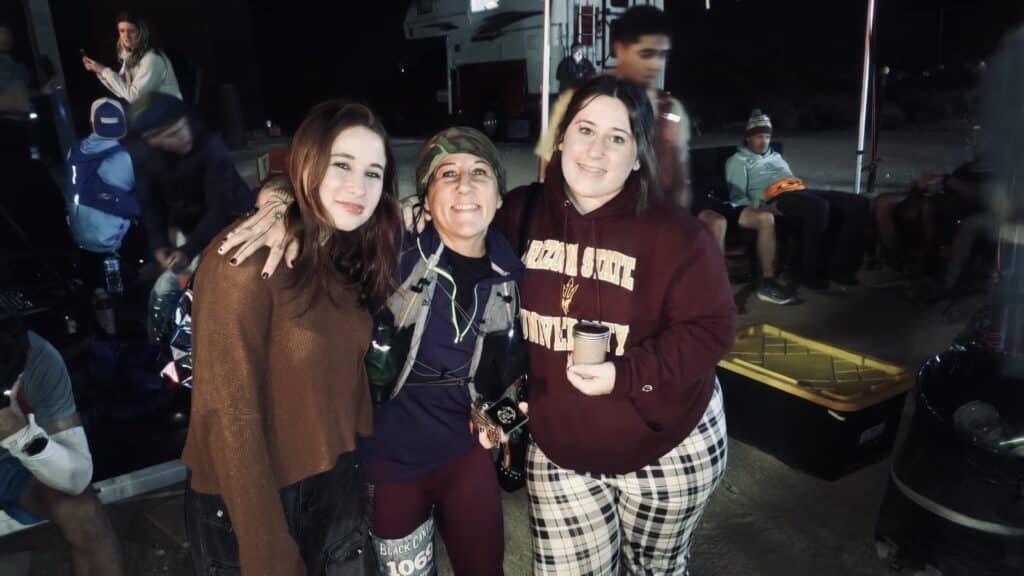
I’ve heard a lot of people suggest adrenaline as the key to my achievement. Maybe that’s true, but it wasn’t adrenaline engendered by thrill or movement endorphins. If adrenaline was the chemical that powered me through, it was fueled by love and support. I know that because I have been racing ultramarathons for a year now, and at every single race I have had moments of despair, self-doubt, frustration, and internal cries of “why am I doing this to myself again?” It was different this time. My knee was painful, but it didn’t seem to impact me emotionally. Instead, I made it through the race with confidence, peace, and joy. I owe it to the people in my life who supported me and encouraged me throughout the day. I have kept my previous races personal to me. But this time I shared my experience with others in the months leading up to the race. I trained with my friends, exchanged tips and ideas for training, nutrition, and optimization. I talked about my nervousness and my excitement with them. We pre-celebrated together and we checked in with each other several times in the weeks prior. I sent the live tracking link to several of my friends the night before. On race day, I was consistently receiving encouraging texts and messages from my friends. I’m a bit of an anomaly as a trail runner in that I don’t wear any tracking devices and I typically leave my phone in the car. I did bring my phone on this race in case of emergency, and I’m glad I did because when I turned it on at the halfway point, I was gifted with a list of encouraging text messages. One of my friends sent a screenshot of the live tracking accompanied by a shout out every time I made it to a checkpoint. I received these supportive messages throughout the day. It gave me the fuel I needed not only to keep going, but to maintain an attitude of gratitude! Knowing my partner would be waiting for me at the crew stations gave me something to look forward to. And I found little notes in my drop bags from my daughter, which topped off all my good feelings with an extra spark. When I crossed the finish line, I saw both of my daughters cheering for me, and I felt like I could fly. I sat down while my partner and my daughters catered to me – eventually I pulled out my phone and read a text from one of my friends; “NOW YOU CAN CHOP THAT LEG OFF!”
I want to make it clear that I am paying the consequences of running on an injured knee today. It’s been a couple weeks and my knee is still swollen and the tendons around it are very uncomfortable, even when I walk. I’m working with my team to focus on recovery. I think most runners will relate to the emotional toll an injury has on an athlete. Knowing it may be a while before I can run again, and even longer before I can race, is pretty scary. Running has been a key part of who I am for most of my adult life, and I’m putting in a lot of work just to keep myself from wallowing in my own self-pity. I am committed to recovering, so I’m getting myself to a place where I can accept that I will have to rest, for god’s sake. I’m finding pleasure in other activities that I enjoy; yoga, cycling, friends, and traveling (I just booked a trip to Taiwan!) and working closely with my team to create a plan for healing.
I would never advise anyone to do what I did, but despite the knee fiasco it was my favorite race and I’m glad I did it. I am so grateful to my friends and loved ones who gave me the inspiration and support I needed to make this happen.
And, I still made it under qualifying time!
About the Author

Mara Noel White is a world traveler, trail runner, and lover of bicycles. She has completed several multi-day treks across the globe, adopting the trail name The Tiny Adventurer. She is also a poet and writer, and you may find her performing poetry at open mics anywhere in the world! Mara is a licensed social worker and has spent much of her career advocating for issues related to social equity and environmental justice, including creating more inclusive spaces for women, LGBTQ+, and BIPOC in the outdoors. Some of her favorite activities are trail running, cycling, backpacking, camping, diving, kayaking, climbing. Her most cherished moments are with friends she’s made across the world, and she’s dedicated to helping others make the most of their adventures through one simple concept: kindness.
Share This Article!

